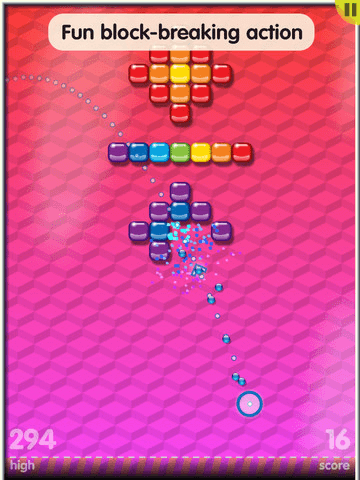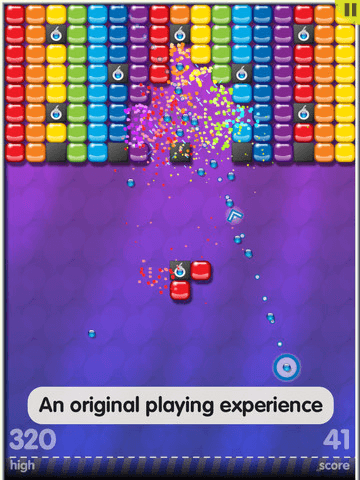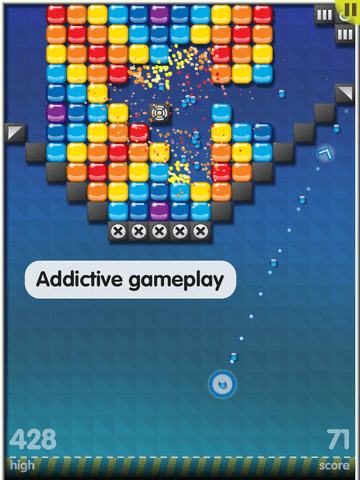- Wondering how to get Monopoly GO! free rolls? Well, you’ve come to the right place. In this guide, we provide you with a bunch of tips and tricks to get some free rolls for the hit new mobile game. We’ll …
Best Roblox Horror Games to Play Right Now – Updated Weekly
By Adele Wilson
Our Best Roblox Horror Games guide features the scariest and most creative experiences to play right now on the platform!The BEST Roblox Games of The Week – Games You Need To Play!
By Sho Roberts
Our feature shares our pick for the Best Roblox Games of the week! With our feature, we guarantee you'll find something new to play!Type Soul Clan Rarity Guide – All Legendary And Common Clans Listed!
By Nathan Ball
Wondering what your odds of rolling a particular Clan are? Wonder no more, with my handy Type Soul Clan Rarity guide.
X-Rainbow Review
X-Rainbow is a Breakout game at its core: colorful rows of blocks dominate the screen, susceptible only to a ball shot by the player’s touch. With a few ideas borrowed from Peggle and a handful of unique puzzle mechanics added in, this newcomer should have proven a great addition to the brick-breaking family. Unfortunately, good genes don’t guarantee success, and X-Rainbow falls far short of its potential.

X-Rainbow glitters, but it’s not gold.
X-Rainbow is a Breakout game at its core: colorful rows of blocks dominate the screen, susceptible only to a ball shot by the player’s touch. With a few ideas borrowed from Peggle and a handful of unique puzzle mechanics added in, this newcomer should have proven a great addition to the brick-breaking family. Unfortunately, good genes don’t guarantee success, and X-Rainbow falls far short of its potential.
The goal in each of X-Rainbow‘s 70 levels is to remove the colored blocks from the game board. Hitting a block with a ball causes it to disappear from play; balls are shot by dragging your finger in any location below the board’s vertical halfway point and letting go to release. Like a slingshot, dragging a longer distance causes the ball to fly farther and faster. All balls, regardless of speed and direction, are eventually affected by gravity, which is represented by a distinct arc in the always-visible aiming trajectory.
Unlike its standard Breakout brethren, X-Rainbow does not use a paddle to return balls back into play. Balls will automatically bounce off destroyed blocks and other objects, like walls, until they fall off the bottom of the screen, hit a destructive item, or bounce a total of ten times. Since this could result in extremely slow, inactive gameplay while watching a ball play out its life, another critical change has been introduced: players can shoot as many balls as they want simultaneously.
As soon as a ball is launched, another can be immediately released. There’s no limit on balls in play and no counter on available balls. Using a ball does subtract one point from your total score, but destroyed blocks award ten points each, meaning you could whiff nine shots completely and still come out ahead.
Not that points really matter at the end of the day. X-Rainbow has adopted a single-player score system in which you’re only competing against your own high score. There’s no “best” score to aim for, minimum numbers of balls to use, timed challenge, or even Game Center integration for comparing scores with your friends. And since every level varies on number of blocks and points available—ranging from 100 points on some to well over 1,000 on others—it’s nearly impossible to tell if you’re actually doing well.
Since score has no meaning, the only motivation remaining is to simply finish a level in order to open up the next locked one. Doing so will usually involve firing as many balls as possible in order to quickly clear the board and move on. While this strategy is successful about half of the time, some stages do require a more precise, focused approach, thanks to the introduction of special blocks with unique effects. These blocks range from magnets that affect a nearby ball’s trajectory to black holes that immediately destroy a ball, unlucky 13s that hide the aiming guideline to blocks that can be moved (and used to push other unmovable, unbreakable blocks). There are downward-shifting blocks that threaten to cross the bottom threshold and give a game over, bomb blocks that explode into multi-balls when hit, and a half dozen other blocks that change the way the game is played. Overall, the variety of mechanics introduced is impressive, and each stage usually features multiple combinations of these unique blocks for an increased challenge.
With the inclusion of these special blocks and the need for thoughtful aiming, though, X-Rainbow loses its sense of self. What starts out as a seemingly fast-paced block-breaker with a unique multi-ball mechanic is quickly slowed to a crawl by forcing players to carefully aim around hazards, usually one ball at a time. This often happens within the same level even, creating a polarizing experience that is first frantic and then frustratingly tedious. Shooting a single ball is slow, unsatisfying, and still often imprecise, and every time the game stops to force you to do so, it feels more like a chore than an engaging challenge.
There are a few puzzle elements thrown in that provide some redeeming appeal—like having to move a column of blocks to create an opening for access to the colored cubes—but these are few, far between, and sometimes tiresome themselves. Puzzle stages are not called out as such, and the need for a unique approach is rarely readily apparent. One such level pits you against a row of bombs in the center that, if blown up, will cause a chain reaction that obstructs access to colored blocks on the edges. However, with the unpredictable nature of bomb multi-balls, it’s nearly impossible to tell that this is the intended result of the bombs until you’ve retried the stage numerous times.
All of this coalesces into a game that is simply not much fun. The few shining, fast-paced moments in X-Rainbow are negated by its many slow, single-shot requirements. Without a standard scoring system, there’s no incentive to perform well, and no way to gauge what performing well even means. Even events that should be bombastic—literally—and exciting, like blowing up a bomb block and seeing a slew of balls go flying, often fall flat as the balls simply vanish into black holes or fly into unpredictable and ineffective directions. The same could be said for X-Rainbow: what should have been an exciting twist on Breakout misses the target, with no paddle available to help it bounce back.

The good

The bad
More articles...
Monopoly GO! Free Rolls – Links For Free Dice
By Glen Fox
Wondering how to get Monopoly GO! free rolls? Well, you’ve come to the right place. In this guide, we provide you with a bunch of tips and tricks to get some free rolls for the hit new mobile game. We’ll …Best Roblox Horror Games to Play Right Now – Updated Weekly
By Adele Wilson
Our Best Roblox Horror Games guide features the scariest and most creative experiences to play right now on the platform!The BEST Roblox Games of The Week – Games You Need To Play!
By Sho Roberts
Our feature shares our pick for the Best Roblox Games of the week! With our feature, we guarantee you'll find something new to play!Type Soul Clan Rarity Guide – All Legendary And Common Clans Listed!
By Nathan Ball
Wondering what your odds of rolling a particular Clan are? Wonder no more, with my handy Type Soul Clan Rarity guide.








 “
“ “
“